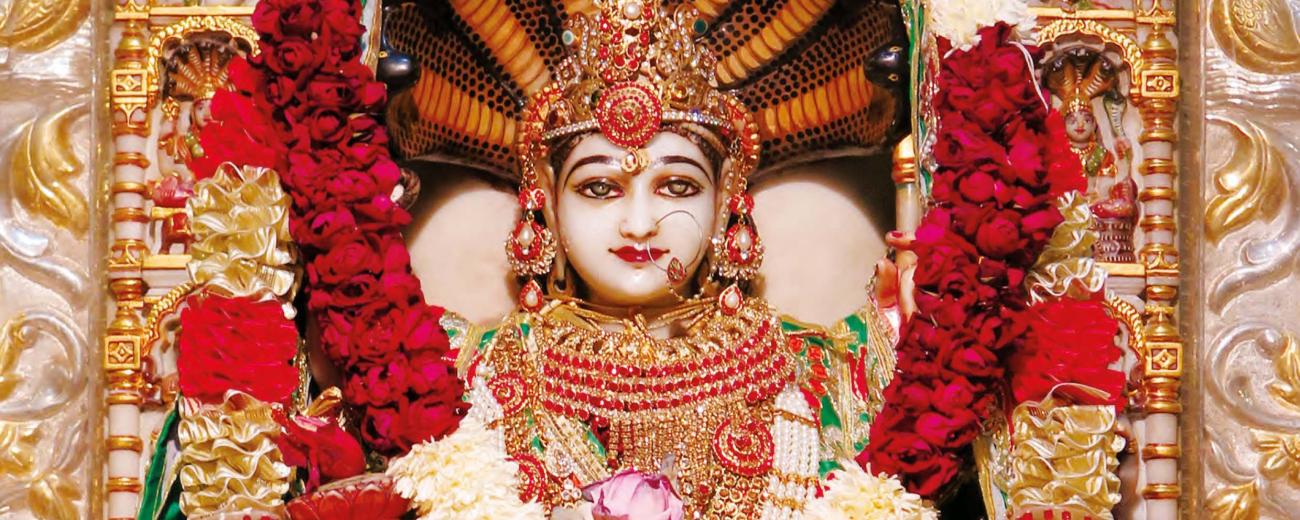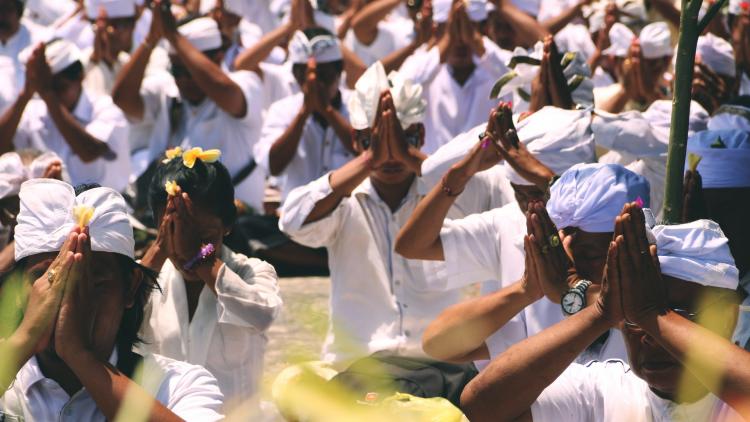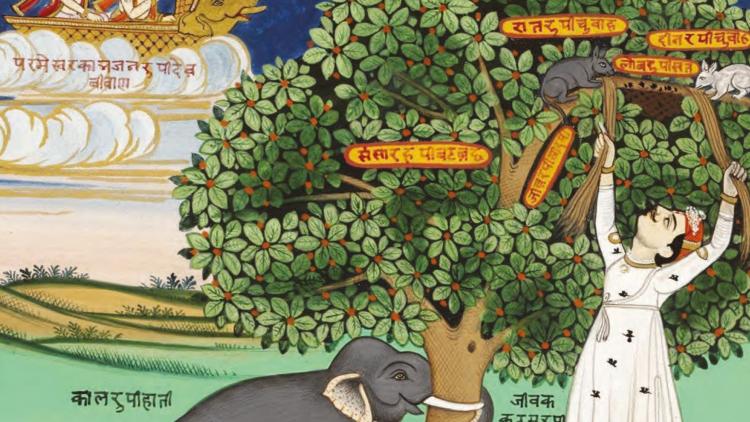Literary Heritage of the Aniconic Jaina Tradition


Overview
The aim of the project is to collect, transliterate and publish important, yet unstudied manuscripts pertaining to the history, doctrine and religious culture of the Lonkagaccha Jaina traditions in India. A comprehensive survey of the heritage of this historically influential tradition is an urgent, yet to be accomplished task.
The Lonkagaccha is an aniconic religious tradition that emerged and flourished in the 15th and 16th centuries. It had a significant impact on the religious and social history of Jainism, but declined from the 18th century onward. Today it is on the verge of extinction, while the aniconic Sthanakavasi and Terapanth traditions, which branched off the Lonkagaccha lineages in the 17th and 18th centuries, continue to thrive.
The text edition will facilitate subsequent investigations on the history of the different lineages of the Lonkagaccha, their relationships with one another and with rival Jaina schools and sects. The project will contribute both to the preservation of the heritage of this endangered tradition and to its understanding.
Background
The 15th century Svetambara Jaina lay reformer Lonka instigated the not-image-worshipping, so-called aniconic or protestant Jaina mendicant tradition which differentiated into many lineages and three main schools to which now ca. 30% of all Jains are affiliated. These are known as the Lonkagaccha, Sthanakavasi and Terapanth traditions.
In its rejection of image-veneration, temple-construction and other traditional Jaina practices which seemed to contradict scriptural lore, the Lonka tradition was one of the most innovative and influential Indian religious movements of the early modern period. It swiftly spread from Gujarat through Rajasthan to Hariyana and the Punjab in the north and later also to Mumbai in the south.
Articles
- Flügel, Peter & Sheth, Kalpana (eds.) (2016)The Literary Heritage of the Aniconic Jaina Tradition
- Flügel, Peter (2014) 'Historical Sources on the Lonkagaccha- and Sthanakavasi-Traditions in Johannes Klatt’s Jaina-Onomasticon.' In: Kimura, Toshihiko, (ed.), Indian and Buddhist Studies in Honor of President Dr. Shouou (Kiyoaki) Okuda in Recognition of his Lifelong Scholarship. Osaka: Kosei Publishers, pp. 314-333.
- Flügel, Peter (2012) 'Protestantische und Post-Protestantische Jaina-Reformbewegungen: Zur Geschichte und Organisation der Sthanakavasi IV. 'Berliner Indologische Studien, 20 . pp. 37-124.
- Flügel, Peter (2012) Askese und Devotion: Das rituelle System der Terapanth Svetambara Jains. London: Centre of Jaina Studies.
- Flügel, Peter (2008) 'The Unknown Lonka: Tradition and the Cultural Unconscious.' In: Caillat, Colette and Balbir, Nalini, (eds.), Jaina Studies. Delhi: Motilal Banarsidas, pp. 181-279. (Papers of the 12th World Sanskrit Conference Vol. 9.)
- Flügel, Peter (2009) 'Jain Monastic Life: A Quantitative Study of the Terapanth Svetambara Mendicant Order.' Jaina Studies: Newsletter of the Centre of Jaina Studies, 4 . pp. 24-29.
- Flügel, Peter (2006) 'Demographic Trends in Jaina Monasticism.' In: Flügel, Peter, (ed.), Studies in Jaina History and Culture: Disputes and Dialogues. London and New York: Routledge (Taylor & Francis Group), pp. 312-398. (Routledge Advances in Jaina Studies)
References
- Desai, Mohanlala Dalicanda (1926-44) Jaina Gurjar Kavio. Mumbai: Jaina Svetambara Conference Office (Second edition: Sampadaka: Jayant Kothari. Bhag 1-5. Mumbai: Mahavira Jaina Vidyalaya, 1988).
- Hastimala, Acarya (1968) Pattavali Prabandha Samgraha. Samkaliyata & Samsodaka:Acarya Hastimala. Sampadaka: Narendra Bhanawat. Jaypur: Jaina Itihasa Nirmana Samiti.
- Jain, Sagaramala & Vijaya Kumara (2003) Sthanakavasi Jaina Parampara ka Itihasa. Varanasi: Parsvanatha Vidyapitha.
- Jinavijaya, Muni (Sampadaka) (1961) Vividhapattavalisamgraha. Bambai: Singhi Jaina Sastra Siksa Pitha (Singhi Jaina Granthamala 53).
- Jnanasundara, Muni (1936) Srimad Laumkasah. Phalodi: Jnana Puspamala.
- Kalyanavijaya, Gani ‘Pandita’ (Lekhaka & Sampadaka) (1966) Sri Pattavali Paraga-Samgraha. Jalor: Kalyanavijaya Sastra-Samgraha-Samiti ke Vyavasthapaka Munilala Thanamala.
- Malvaniya, Dalasukhbhai D. (1963a) Sri Lonkasah ni ek Krti. In: Svadhyaya 2, 1: 50-82.
- Malvaniya, Dalasukhbhai D.1963b: Sri Lokasah ane temana Mat. In: Svadhyaya 2, 2: 143-155.
- Nahata, Agarcand (1969) Aitihasik Kavya-Samgraha. Byavar: Muni Sri Hajarimal Smrti Prakasan.
Further information
Personnel
- Dr Peter Flügel (SOAS), principal investigator
- Dr Kalpana Sheth (Ahmedabad), research assistant
Schedule
Start date: 01/04/2016. End date: 31/03/2018.
Funder
This project is funded by British Academy/Leverhulme Trust Grant SG152131.




